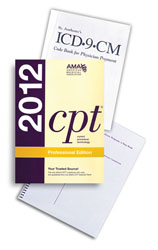Q. What is a “vision plan”?
A. A vision plan is an insurance policy that typically provides a benefit for routine eye care and either coverage or a discount on eyewear (frames, lenses, contact lenses). The plan may be a stand-alone plan or it may be combined with a medical insurance plan.
Q. Will Medicare provide the same benefit as a vision plan for a routine eye exam?
A. No. By law, Medicare does not pay for routine vision exams. The exclusion policy in the Medicare Benefits Policy Manual Chapter 16 §90 includes this statement: “The routine physical checkup exclusion applies to examinations performed without relationship to diagnosis and treatment … and examinations for the purpose of prescribing, fitting, or changing eyeglasses or contact lenses for refractive errors.”
Q. Is it possible for a Medicare patient to have a separate vision plan?
A. Yes. Many Medicare beneficiaries either purchase a vision plan or have one that is provided as a retiree benefit.
Even if patients have a separate medical plan, vision plans typically do not have a deductible that needs to be satisfied, have minimal or no co-payments and rarely require a referral, unlike medical plans and Medicare.
Q. If a patient has both medical and vision insurance, which is primary?
A. It depends on the reason for the visit from the patient’s perspective. Medical plans should be billed for exams for medical care, evaluation of a complaint or to follow an existing condition. Alternately, exams to check vision, screen for disease or update eyeglasses or contact lenses should be billed to the patient’s vision plan.
Q. Where is the reason for the visit documented?
A. The chief complaint section of the patient’s visit identifies the reason for the visit and determines who is responsible for payment. For example, patients who present with watery eyes and have keratitis sicca, or complain of difficulty reading fine print and have AMD or cataracts, have a medical complaint and medical finding; their medical plan would be responsible for payment.
Complaints such as: “I broke my glasses”; “I need a new prescription”; or “routine eye exam” would require a vision exam that would be covered by the patient’s vision insurance.
 |
Q. If a medical diagnosis is found in addition to the refractive diagnosis, should we also code the medical diagnosis?
A. The ICD-9-CM Introduction answers this question: “During a routine exam, should a diagnosis or condition be discovered, it should be coded as an additional code.”
Q. When a patient comes for a routine vision exam and pathology is found, may we bill the medical plan?
A. No. The chief complaint should comport with the primary diagnosis and determine coverage. In this case, the chart may read, “here for routine eye exam and new glasses” with a corresponding diagnosis of refractive error. The incidental finding of pathology should be addressed on a return visit (unless urgent or emergent).
Q. Which plan is responsible if a patient needs urgent, same day medical and/or surgical care?
A. In the event of an urgent or emergent medical condition, the medical plan would be responsible. The physician should explain to the patient the urgency of addressing the medical condition and that the patient can return at a later time for a vision exam using her vision plan. In these situations, it is important that the chief complaint and the final assessment be in accord with each other. Careful chart documentation of the reason for the visit is essential. An entry such as “cc: wants new glasses” followed by “Plan: laser to retinal tear OD” would be incompatible.
Q. Is it ever possible to bill both medical and vision insurance?
A. Maybe. Some vision plans will cover a refraction even when the visit is covered by the medical plan. If the vision plan allows it, the claim should be submitted with the appropriate medical diagnosis associated with the visit and a refractive diagnosis matched to the refraction. Some vision plans permit filing a diagnosis test, (e.g., visual field) to the medical plan and the visit to the vision plan. It is best to confirm this approach with the payers prior to splitting claims.
Q. Do vision plans provide a “routine” eye exam for diabetics?
A. Some vision plans consider a “healthy” diabetic (ICD-9-CM 250.00) eligible for a covered eye exam through the vision plan. Once again, confirm this with the plan prior to claim submission.
Q. Are there ways to reduce confusion with patients on this subject?
A. Yes. We recommend that you start by determining coverage on the phone during the initial call for the appointment. When the patient arrives for the appointment, confirm the reason for the visit.
Some practices find it useful to use stamps or stickers in the chart, or even different color forms, to alert technicians and physicians to the reason for the visit and the limitations of coverage.
Q. How should we handle the patient who asks our staff to modify a claim to avoid personal responsibility?
A. Tactfully, but firmly, decline to file an incorrect claim. Frequently, patients do not understand their insurance coverage policies. Review the medical record and then explain how the patient’s needs were addressed, as well as the guidelines of the vision and medical plans. Patients may be unhappy, but your explanation may help them to better understand the services that are covered. REVIEW
Ms. McCune is vice president of the Corcoran Consulting Group. Contact her at DMcCune@corcoranccg.com.



